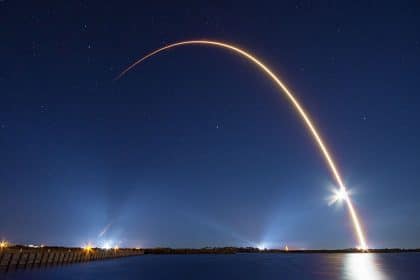Elon Musk’s SpaceX establishes Starlink ‘ground station’ for widespread internet coverage across Britain.
Space transport company SpaceX is setting up a Starlink station on a small, autonomous island in the Irish Sea for transmitting the internet to homes and offices using low-Earth orbit satellites. SpaceX created Starlink in 2015, and the space internet service now has bases in Buckinghamshire and Cornwall, both in England. Completion of its latest business venture will provide comprehensive internet coverage throughout the UK for the Starlink service. The aerospace manufacturer chose the Isle of Man, a British Crown dependency, as its latest site. The tiny island is 32 miles long, 13 miles wide, and is equidistant from England, Scotland, Ireland and Wales.
For this initiative, Starlink is collaborating with the island’s local telecommunications provider Bluewave, to use the provider’s existing infrastructure. Bluewave acquired the site from SES Satellite Leasing in 2020 after the latter pulled out of the island in June of the same year. The site includes a 4 to 8 radome ground station located outside the Douglas capital. These are structural, weatherproof enclosures for the radar antennas involved in processing data transmissions.
Also, Starlink and Bluewave received licenses to “provide services and locations for related equipment on the island,” according to reports from the Isle of Man Communications and Utility Regulators.
Factors that Influenced the Deal
Sources with knowledge of the Isle of Man infrastructure spoke anonymously with the media. They cited the infrastructure’s close proximity to the ocean as an advantage because of a “good horizon scan”. They also pointed out the base station’s direct link to the data center as another benefit to ensure swift data transmission. According to two more sources from CNBC, the existing infrastructure, location, and spectrum all heavily influenced Starlink’s decision to site there.
Other factors that swayed SpaceX include the issuance of cheap licenses by telecommunications regulators. This was according to the first recipients of the Starlink kit in May. In addition, there is a low tax imposition and an already existing relationship between the island and the EU on GDR compliance. Furthermore, the Isle of Man’s population of 85,000 means it has a less busy spectral band than the UK’s. The Irish Sea Island has its own spectral band, just like the larger country. However, the latter has a population of 70 million people.
The impending establishment of the satellite base met with great anticipation and enthusiasm from the island’s people. The island’s corporate sector, through a spokesperson, told CNBC that:
“This is very exciting and positive news for the island and will enable the deployment of satellite broadband services on and off the island”.
They further added that, “Locally, licensing the available spectrum will provide local consumers with more choices and offer more work potential within the island’s telecommunications sector”.
Why SpaceX created Starlink
Starlink’s ultimate agenda is to provide quality widespread internet all across the globe particularly in hard-to-reach areas. The company plans to spend up to $10 billion installing 12,000 small satellites into low-Earth orbit. These will be able to effectively transmit high-speed internet to the ground. So far, 90,000 customers in 12 countries are using 1,700 of its satellites.
next